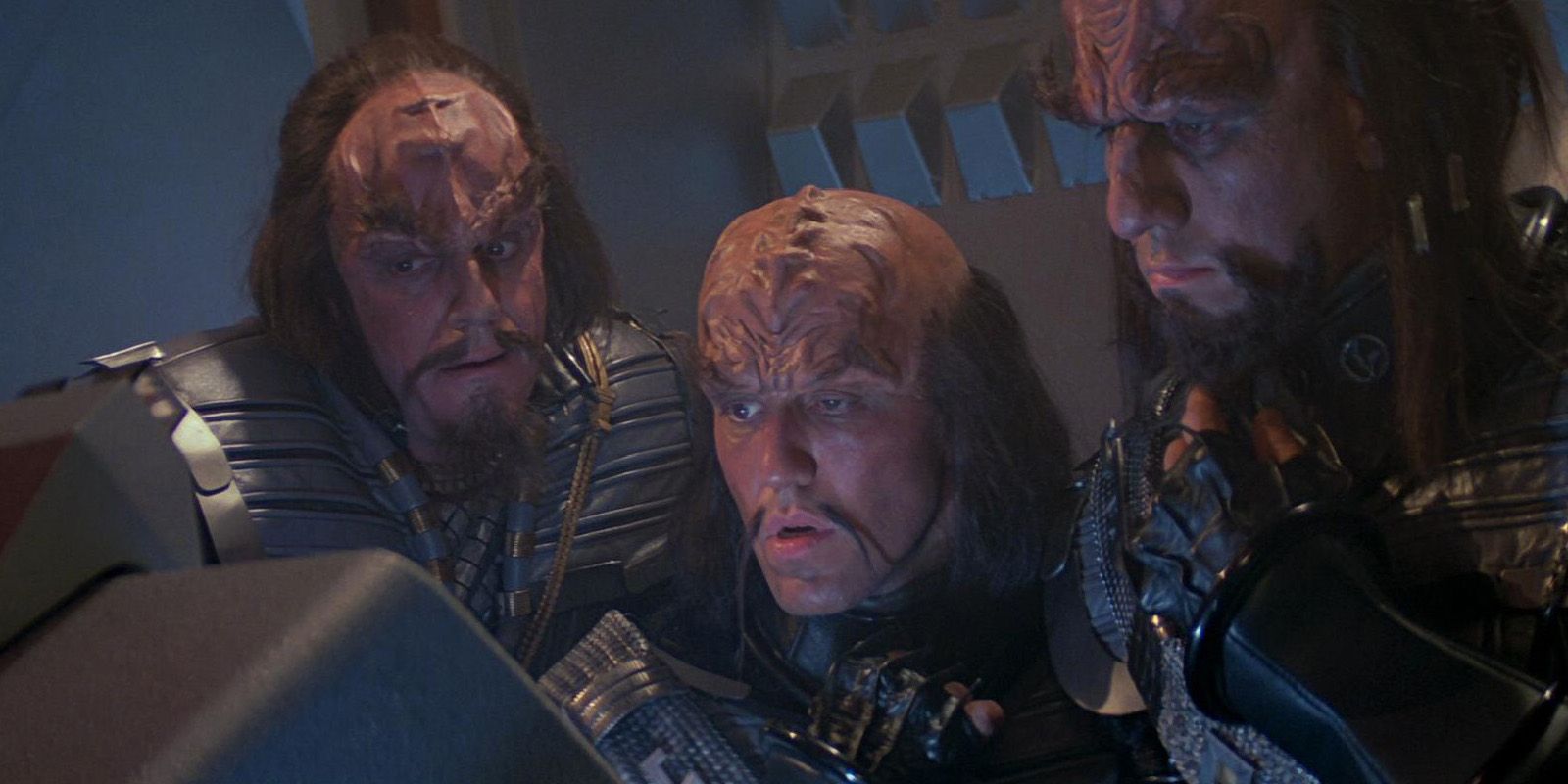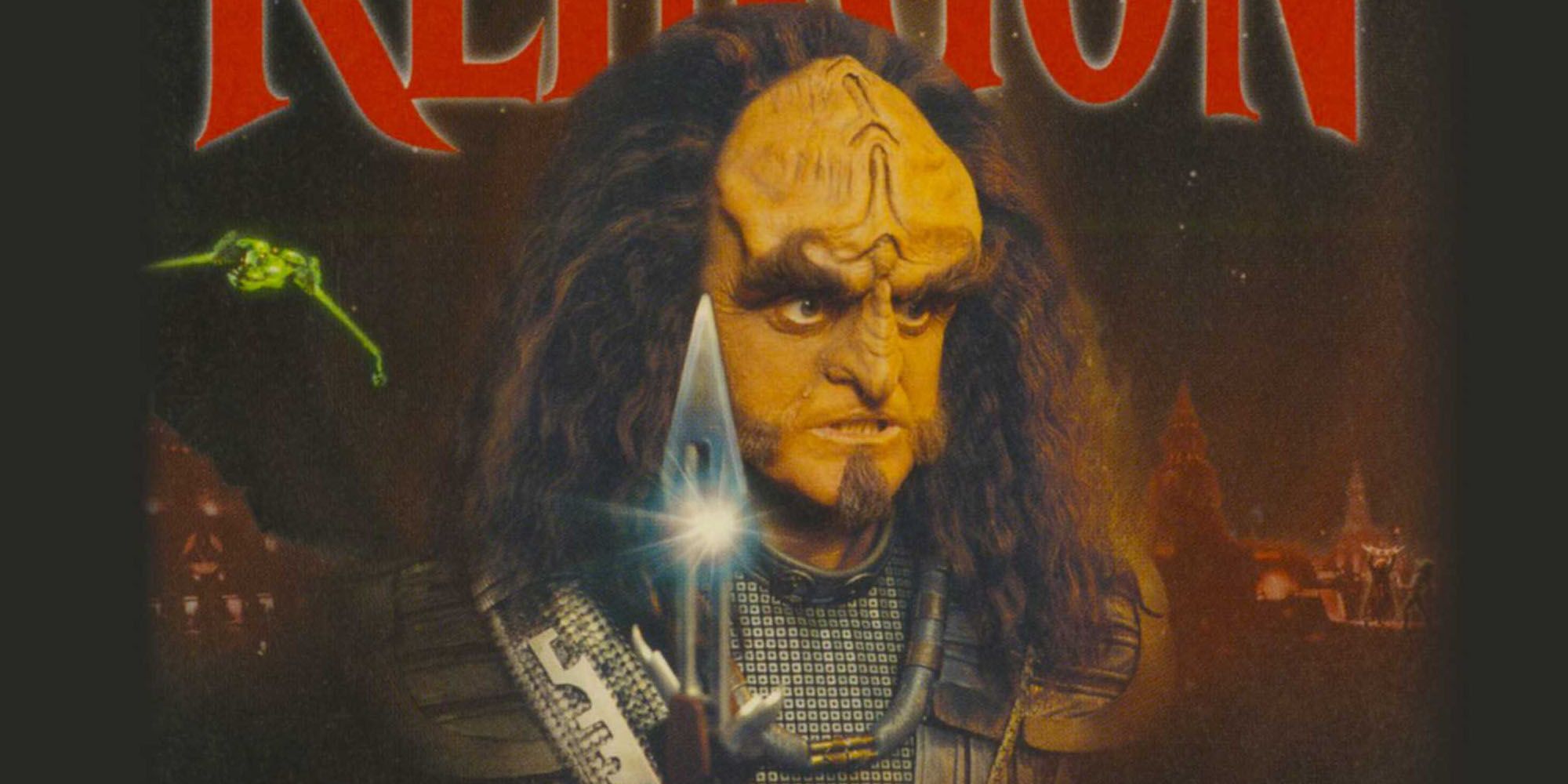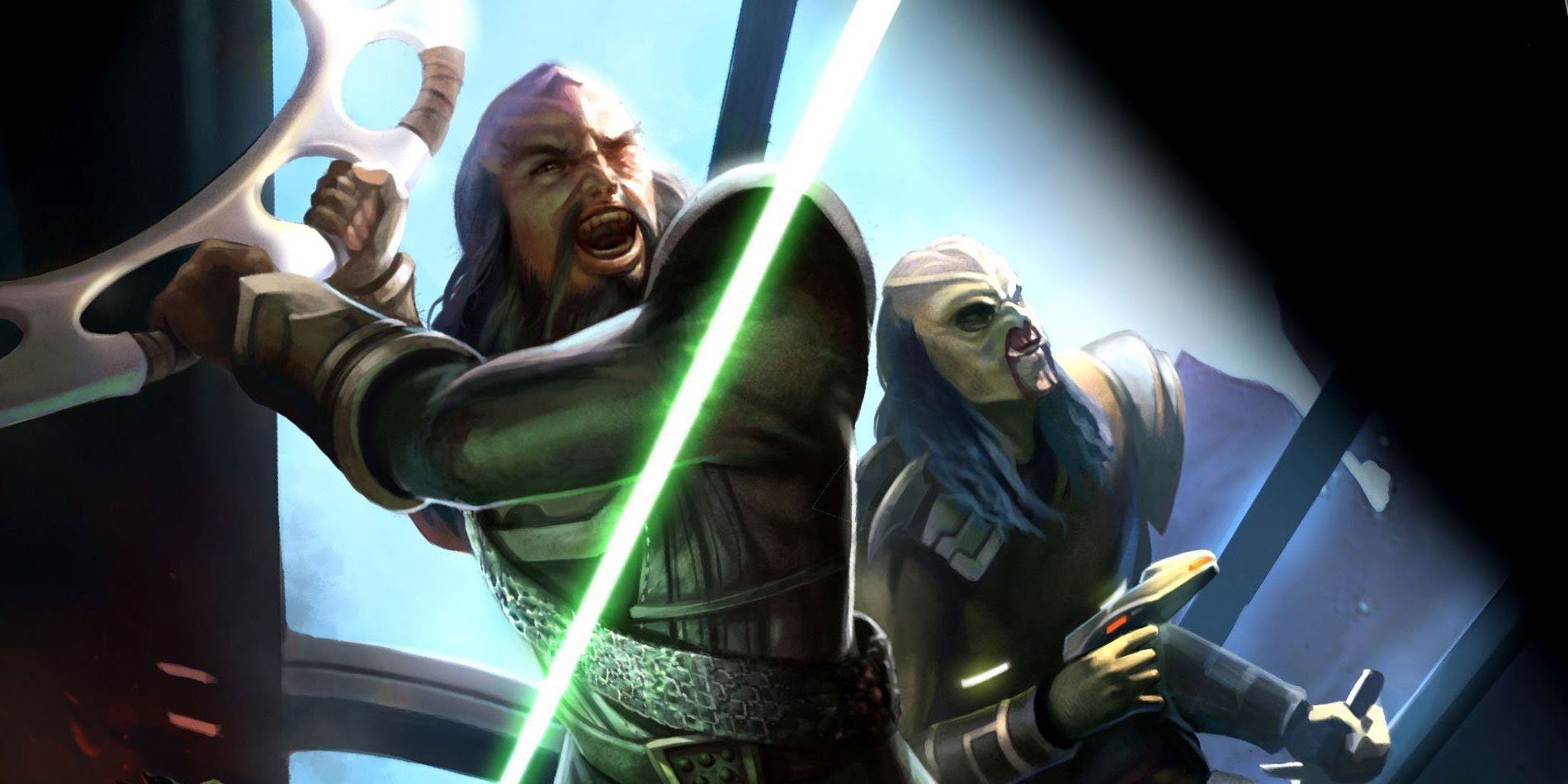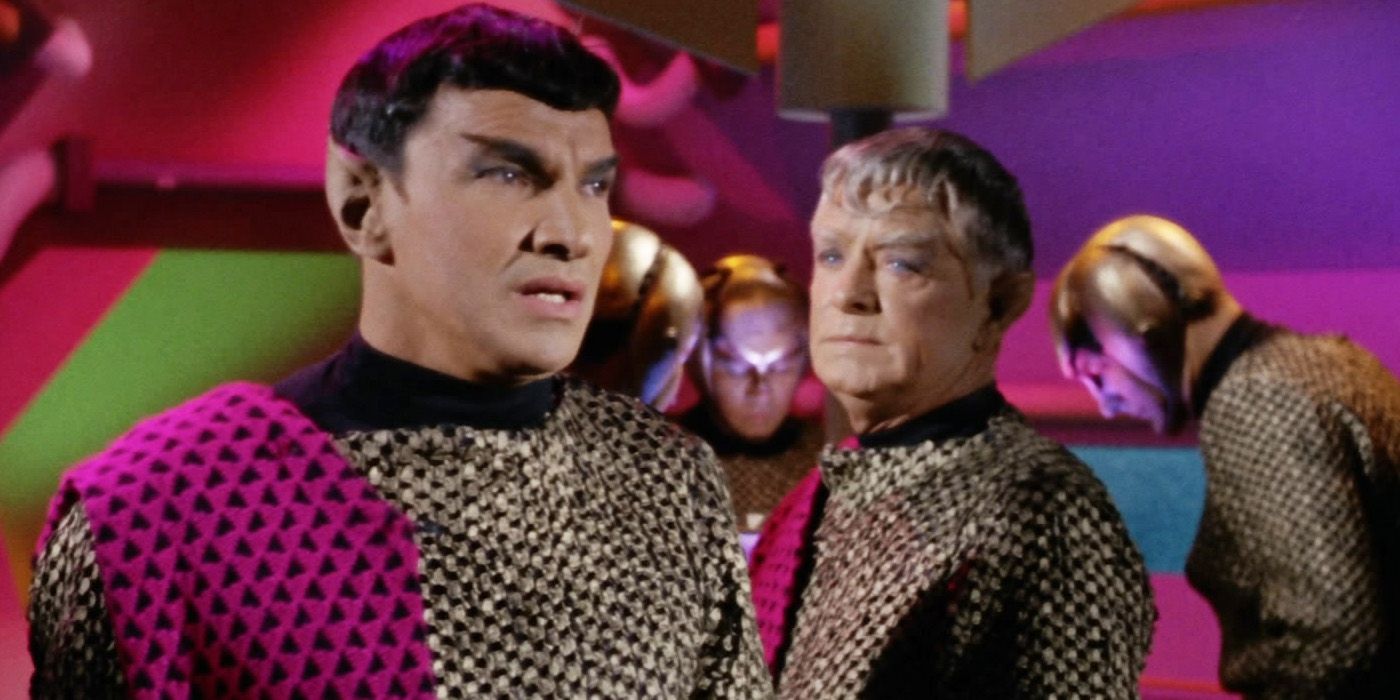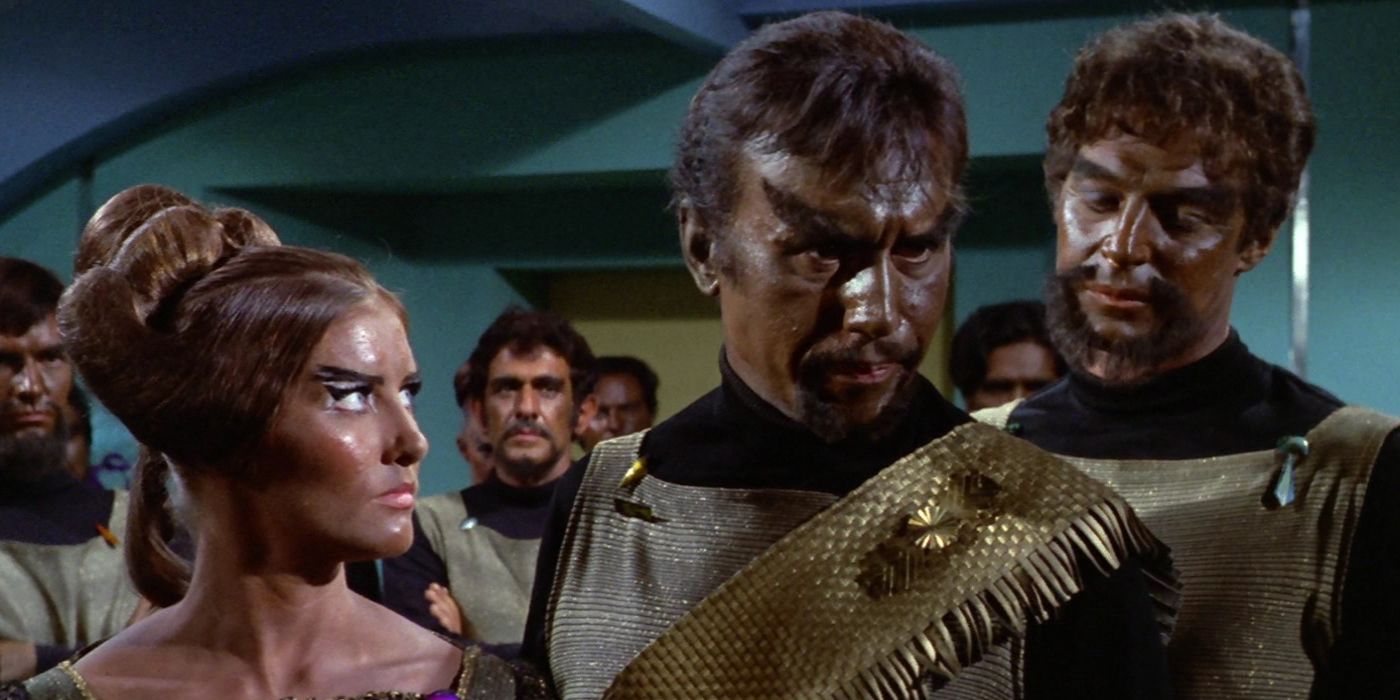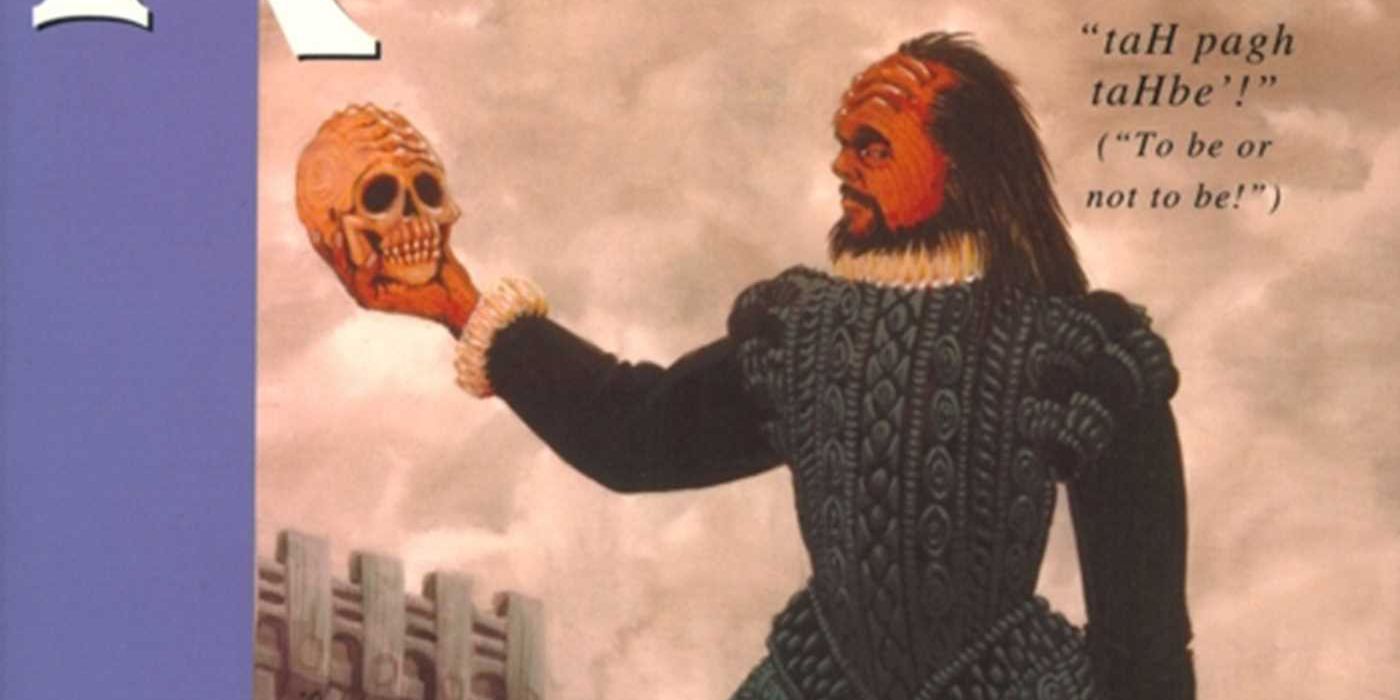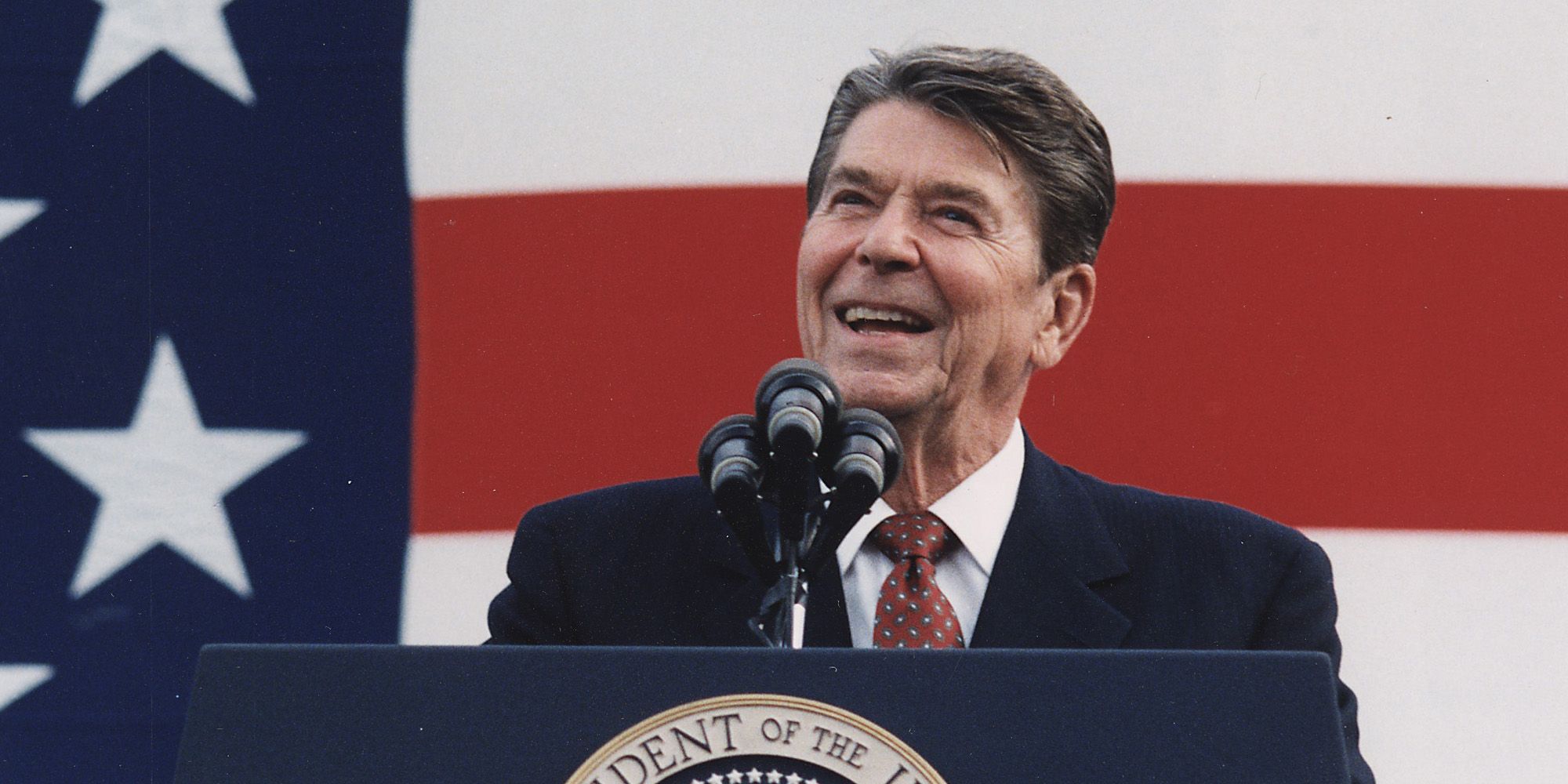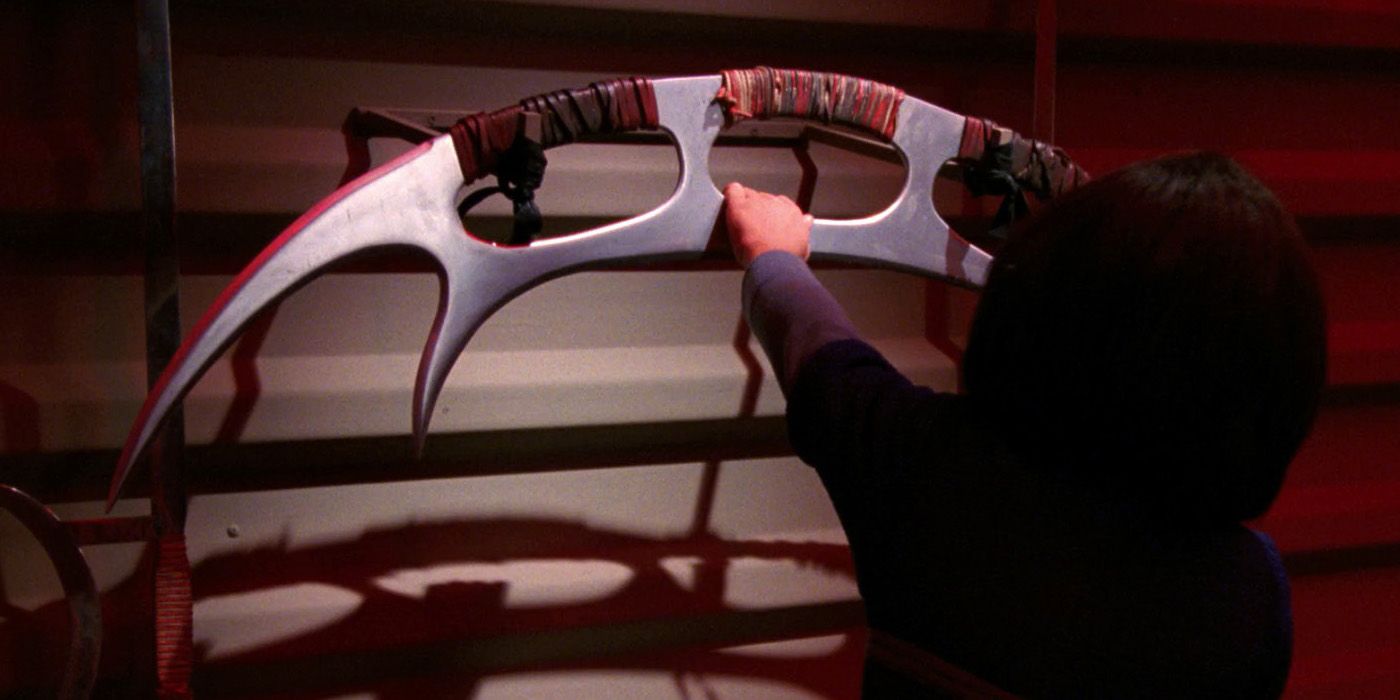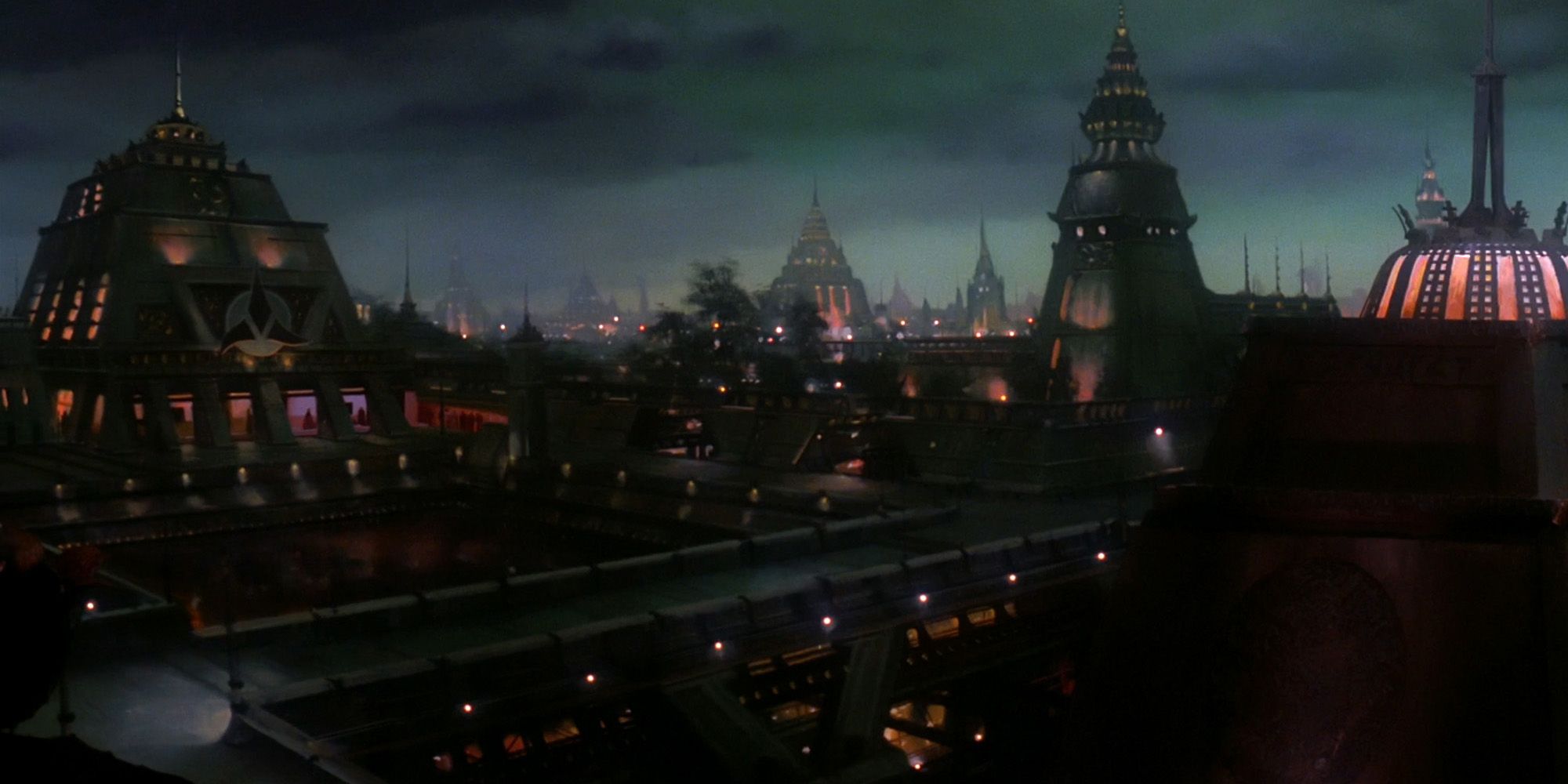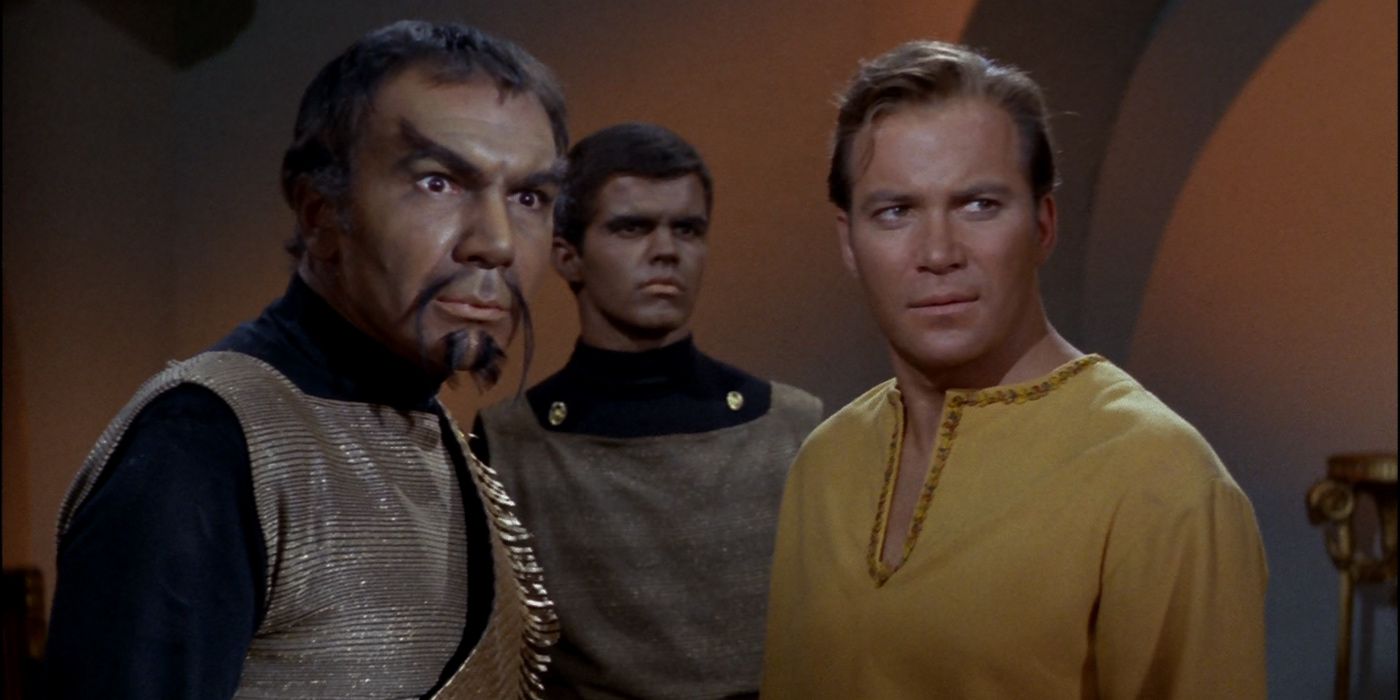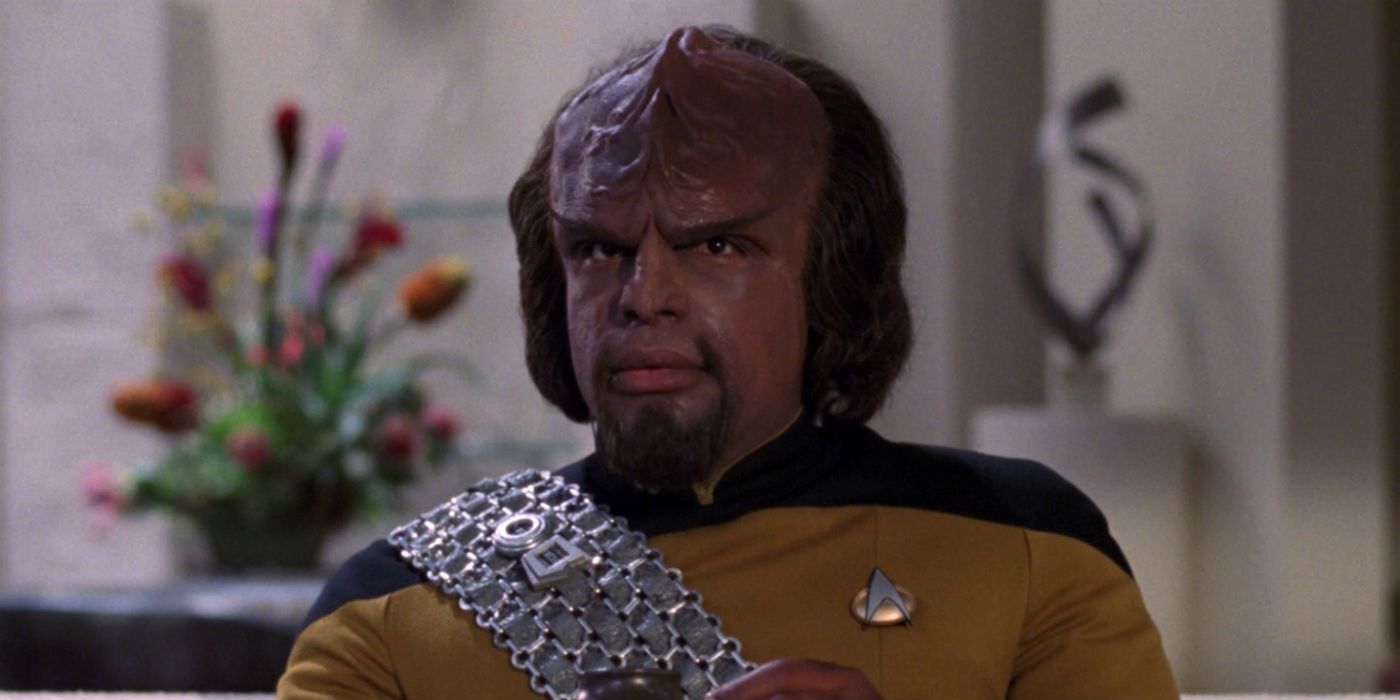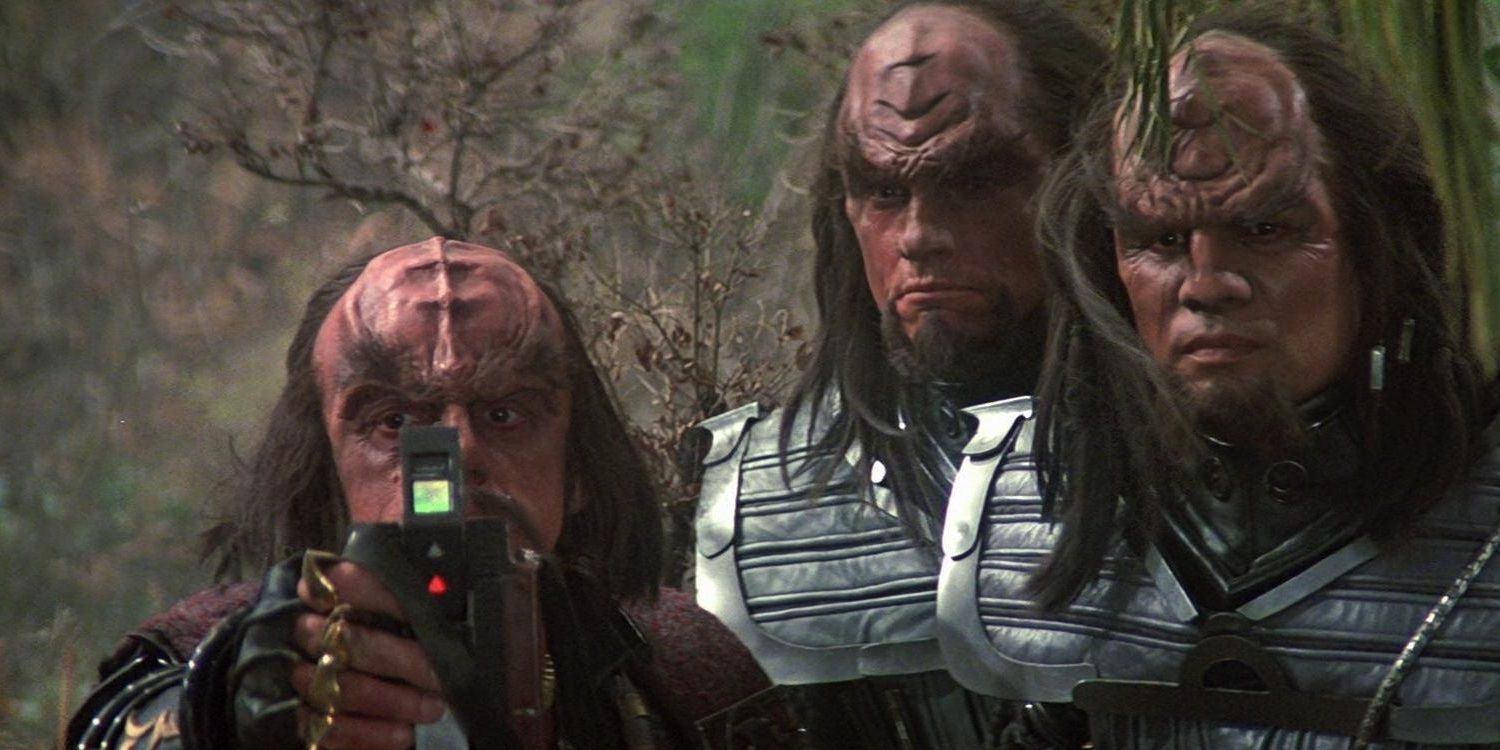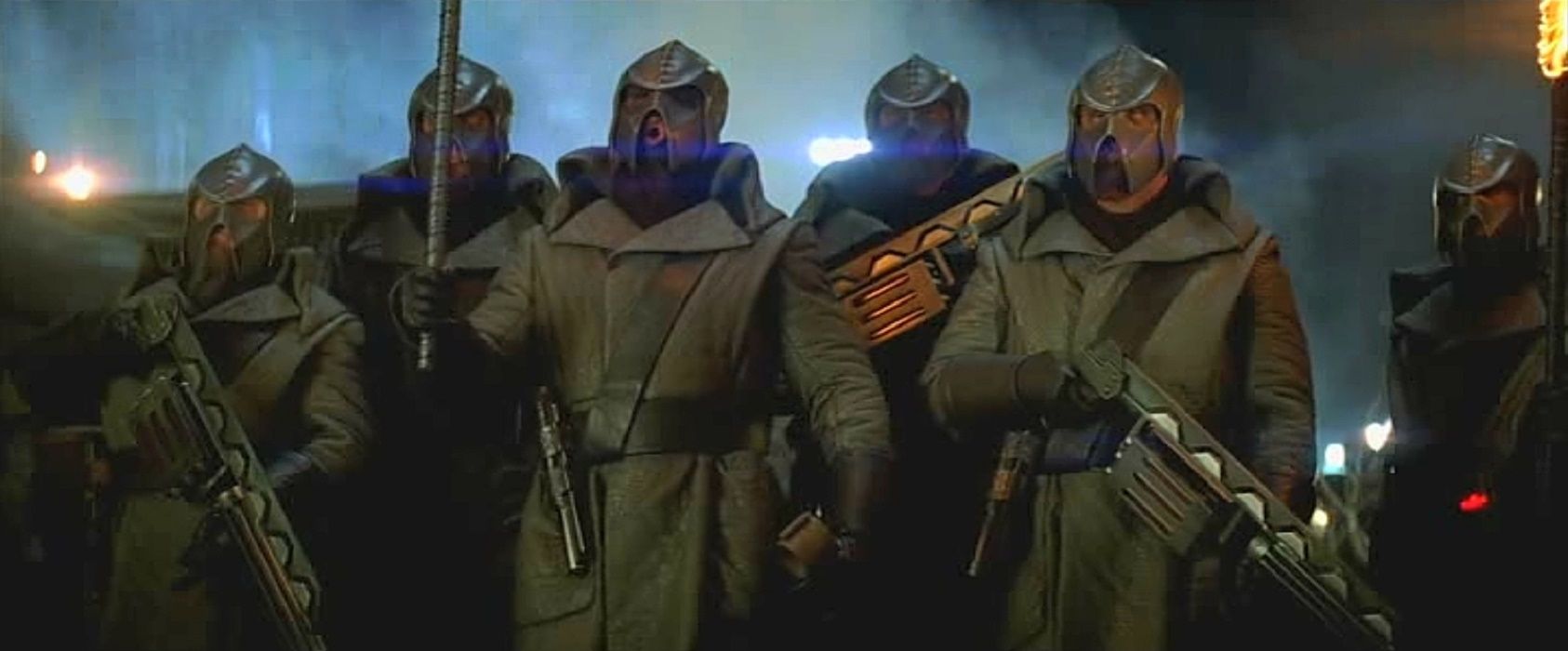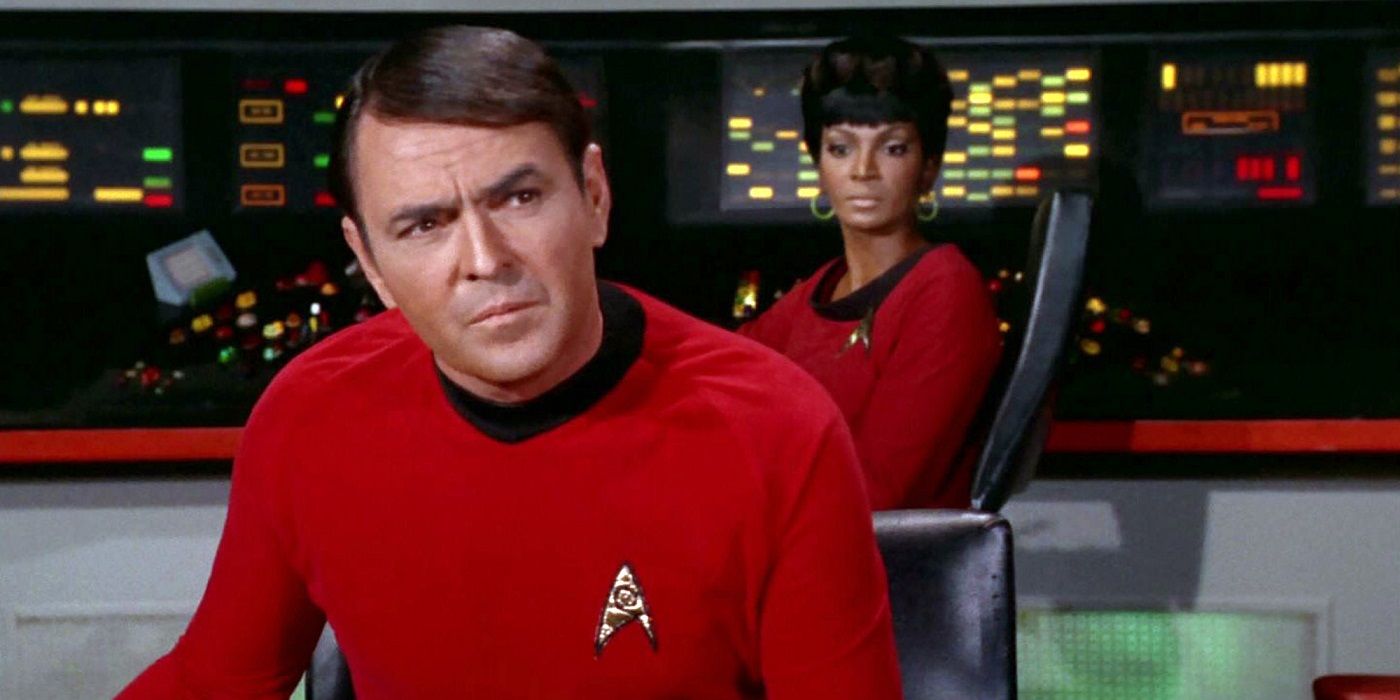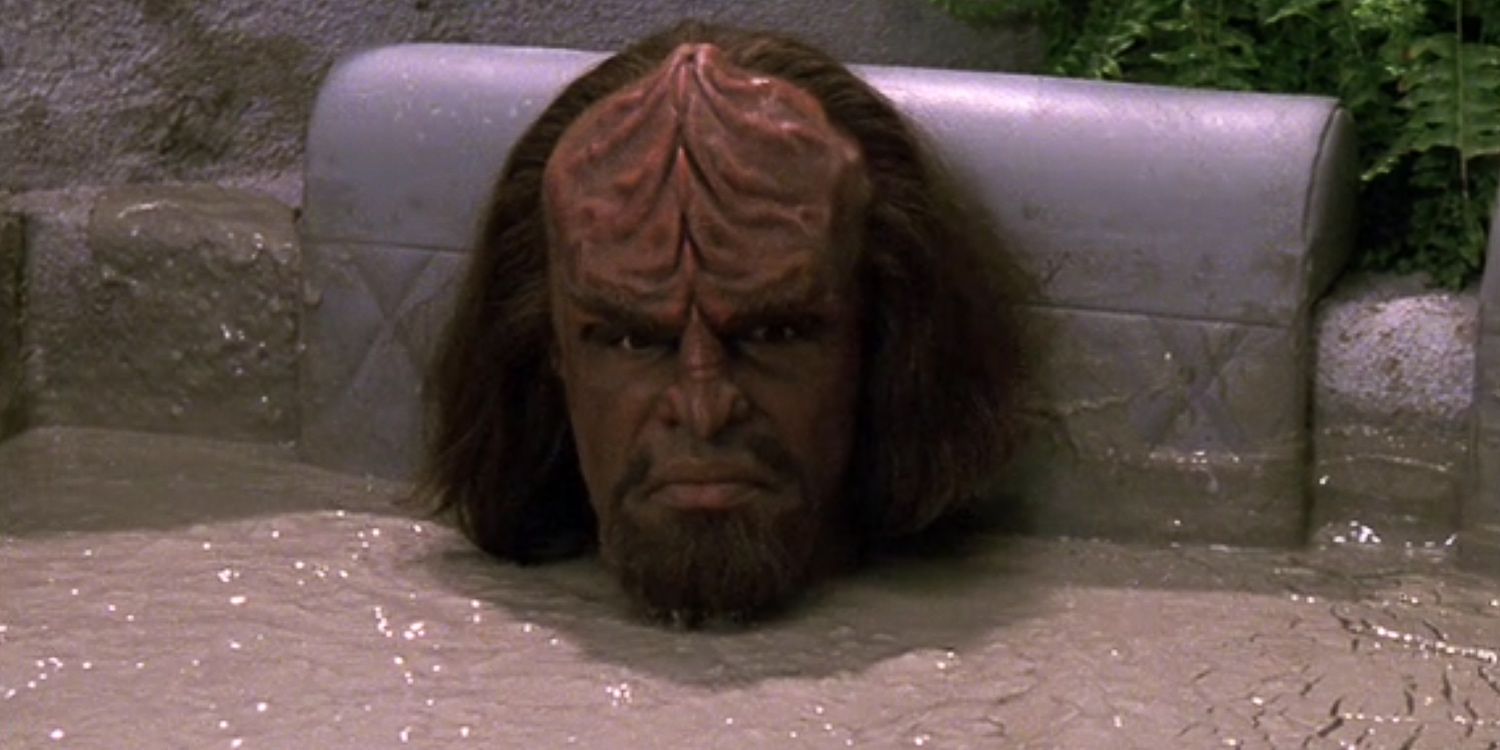The Klingons are one of the most popular species in all of Star Trek. This might be due to the fact that Klingons are defined by their passion and their lust for life. Most of the people in the Federation come across like Human Resources managers, who are desperate not to say or do anything that might be taken as offensive. The Klingons, on the other hand, are all about fighting and singing. Klingons are obsessed with romance and the thrill of combat. These are things that are more in line with the desires of human beings, rather than the sterile protocols of Starfleet.
We are here today to look into the history of some of the greatest characters in Star Trek. From the terrible experimental Klingon video game to Worf's lessons on how to speak the Klingon language.
Here are 15 Things You Never Knew About The Klingons!
15. There Was A Terrible Klingon FMV Game
The invention of optical media helped to revolutionize the video game industry. A single CD could carry seven hundred times the data of a floppy disk. This led to the creation of the short-lived Full Motion Video (or FMV) genre of games. FMV titles consisted of pre-recorded footage, which the players could interact with on a very basic level (usually choosing between branching paths in a story).
Star Trek received several FMV games, since Star Trek shows were still in production at the time, so it was easy for them to reuse sets and costumes. The most notoriously awful of these was Star Trek: Klingon, which starred Robert O'Reilly as Gowron.
The premise of Star Trek: Klingon involves Gowron taking the player on a holodeck adventure that is intended to teach them about Klingon culture. This involves the daily Klingon struggle against foes like bad acting, scenery chewing, and makeup that is noticeably worse than what was seen on the Star Trek TV shows.
14. Why Did The Original Klingons Look So Different?
The Klingons that appeared in Star Trek: The Original Series looked very similar to humans. The main difference was that they were covered in bronze makeup and had pointed facial hair. When the Klingons returned in Star Trek: The Motion Picture, they looked totally different. The new Klingons had massive foreheads, that were covered in thick ridges. No reason was initially given for this change. When Kor from The Original Series showed up in Deep Space Nine, he matched the new design of the Klingons, without any explanation as to why.
Fans of Star Trek would have to wait until 2005 for an official reason for the change in Klingon design. In the Star Trek: Enterprise episodes "Affliction" and "Divergence", the Klingon Empire was threatened by the Augment Virus. This was a disease that was created during at attempt to copy the genetically engineered soldiers of Earth's past (like Khan). The Augment Virus was stopped, though it altered the genetics of millions of Klingons so that their descendants would resemble humans. This effect also became reversible over time, which explains why people like Kor changed appearance in the later seasons.
13. The Klingons Are At War With The Federation Once More
When the Star Trek reboot was first announced, a lot of fans were worried that it would retcon away the events of the previous Star Trek movies and TV shows. This was not the case, as the timeline of the TV show universe was continued in an MMO, called Star Trek Online.
Star Trek Online is set thirty years after the end of Star Trek: Nemesis (the final movie before the reboot). In this timeline, the Federation is at war with the Klingon Empire once more, which forms the basis for the main conflict in the game. Star Trek (2009) actually explained one of the main reasons for this war: the Romulan Empire is in decline, due to the destruction of the planet Romulus, and the death of the previous leader of the empire (Shinzon from Nemesis). With a huge power vacuum being opened in the Alpha Quadrant, the Klingons swept in and expanded their empire. The Federation is all that stands in the way of total Klingon dominance.
12. The Klingon Laws Of Acquisition
When the Klingons were first introduced, they were established as enemies of the Federation. This led to numerous armed conflicts and all-out wars between the two factions. There have also been extended periods of cooperation between the Klingons and the Federation, which led to years of peace. The Klingons have been more involved with the events of Star Trek than any other non-Federation species.
The reason the Klingons were used so much in The Original Series was due to expenses. When compared to other races, like the Gorn, or even the Romulans, the Klingon makeup was a lot cheaper and easier to apply. All you had to do to make a Klingon was apply some bronze face paint to an actor. If they wanted to make a Vulcan or Romulan, then they had to go through the expense of making the pointed ears. As such, the Klingons appeared more, because they were cheaper to make. The budget for Star Trek: The Original Series was a lot smaller than those of the later iterations of the show, so they had to work around their monetary issues as best they could.
11. They Were Originally Supposed To Be Asian
The many different factions in Star Trek have often been used as an allegory for real life countries and institutions. The Borg were often accused of representing Communism, whilst The Romulans were thought to represent various real-life fascist dictatorships. It is hard to deny that the writers of the show had any sort of political agenda when you consider episodes like "Let That Be Your Last Battlefield".
When it comes to the Klingons, they have been compared to both the Nazis and the Soviet Union. As time went on, these elements were toned down, and they were given qualities similar to sterotyped Vikings and Native Americans, with some Samurai stuff thrown in for good measure.
According to Gene Roddenberry's original design document for the Klingons, they were described as being "Oriental". This proves that the creator of Star Trek did have a very specific idea in mind for what the Klingons were meant to represent. The original makeup for the Klingons has also been compared to "yellowface", which is the practice of white actors pretending to be Asian. Luckily for Star Trek fans, a lot of Gene's ideas were changed for the better, by the other writers and the executives in charge of the show.
10. Klingon Hamlet
While Klingons are known for their love of combat, they also have a great appreciation for the arts. There are many references throughout Star Trek concerning Klingon literature and music. Klingons love opera most of all, to the point where Worf could be found singing it in a few episodes. In fact, Klingons tended to sing in a lot of the episodes where they appeared.
In Star Trek VI: The Undiscovered Country, Chancellor Gorkon talks of his love for Shakespeare. This line led to the creation of The Klingon Hamlet. The Klingon Language Institute (which is a real thing) spent years translating Hamlet into Klingon. All of the names and locations were changed to fit better with the language. Hamlet is now Prince Khamlet, and Denmark is exchanged for the planet Qo'noS.
When The Klingon Hamlet was released, it inspired actual stage productions of the play. Even acclaimed actors, like Stephen Fry, have tread the boards as a Klingon.
9. Ronald Reagan & The Klingons
It took a long time for Star Trek to get its due. The Original Series faired poorly in the ratings, during their initial broadcast run. It took syndication for the show to finally start earning the credit it deserved. The success of the Star Trek movies (which were bolstered by the arrival of Star Wars), led to the return of the TV show. When Star Trek: The Next Generation became a success, the show started to receive attention from some unexpected sources.
During the filming of the Star Trek: The Next Generation episode"Redemption", the set was visited by Ronald Reagan, who was a former President of the United States at the time. As the episode was focused on Klingons (it dealt with the approaching civil war between Gowron and the Duras Sisters), the question of what Ronald Reagan thought of the Klingons was brought up. According to Ronald Reagan, he said, "I like them, they remind me of Congress".
8. Real Life Klingon Crimes
The signature weapon of a Klingon warrior is the bat'leth (which means "sword of honor"). These were created entirely for the Star Trek TV shows and were not based on any real world weapons (outside of some general inspirations for its design). Throughout the entire run of the show, we see the bat'leth being used during battles and as the main choice of weapon in a duel between Klingons.
If you have ever attended a comic convention, then chances are you have seen one of these weapons up close. Bat'leths are a popular choice for replica weapon makers, that often set up stalls at cons. People have got into trouble in real life for possessing a bat'leth and using them in crimes.
In the United Kingdom, there have been many cases of bat'leths being taken from the homes of crime suspects (even if they were later found to be innocent). While you can technically own a bat'leth in your home, they can be seized without cause by the police. In America, there have been armed robberies that were committed using bat'leths, with the perpetrator being sent to jail. This is a dishonorable use of the bat'leth, and the criminal will most likely end up in Gre-thor as a result.
7. The True Name Of The Klingon Homeworld
The name of the Klingon homeworld was a mystery for a long time. This was due to the initial secrecy concerning the details of the Klingon Empire. Starfleet didn't even know where the Klingon homeworld was for the longest time, as they had never gotten that far into Klingon territory. It took the initial war with the Klingon Empire, followed by the peaceful alliance that followed, for the Federation to learn more about their enemies.
Before the name was finally established in Star Trek VI: The Undiscovered Country, the Klingon homeworld was given several different names. It was originally called "Klingon", with later sources naming it "Ultar", "Kling" and "tlhIngan". The name was finally given as Kronos, which was later changed to Qo'noS. Despite the name finally being given, it has been misspelled in numerous episodes of Star Trek. Kronos is considered to be the only acceptable alternative, as it is the anglicized version of the name, while Qo'noS is the traditional Klingon spelling that is used by members of the empire.
6. The Klingons Are Named After A Person
Gene Roddenberry was already in his mid-forties when work on Star Trek began. He had worked on numerous different TV shows as either a writer or a producer for many years and would create many others after the initial failure of Star Trek.
Before Gene Roddenberry became a writer, he served in the Air Force during World War II. After the war ended, he joined the Los Angeles Police Department and worked in their Traffic Division. Roddenberry ended up in the newspaper unit, which led to him becoming a technical advisor on police based TV shows. This was how he broke into the television industry.
It seems that Gene Roddenberry's days on the police force left an impression on him, as he named one of the main species in Star Trek after one of his old colleagues. The Klingons are named after Lieutenant Wilbur Clingan, who served with Roddenberry in the Los Angeles Police Department.
5. The Most Prolific Star Trek Character Is A Klingon
Worf, son of Mogh, was introduced in the first episode of Star Trek: The Next Generation. He was the first Klingon to ever join Starfleet. This was partly due to the fact that he was raised by humans, as his last (known) living relatives all perished during the attack on Khitomer. He was rescued by a member of Starfleet, who would adopt him into his family. Worf was one of the most interesting characters on the show. He offered a unique insight into the Klingon Empire, as an outsider looking in. Worf believed the stories of the Empire and was shocked to learn the truth about how deceptive and cruel Klingons could actually be.
When Star Trek: The Next Generation ended, it seemed like this was going to be last we saw of Worf, but he would return to the franchise as a new cast member in Star Trek: Deep Space Nine. Worf joined the show during its fourth season and would remain until the end.
Due to his tenure on both shows, Worf is the character that has appeared in the most episodes of Star Trek. Michael Dorn appeared as Worf in over 250 episodes and 5 movies. The second place belongs to Colm Meaney, who played Miles O'Brien in over 220 episodes.
4. The Klingon Language Record
There have been several languages that were created as part of a fictional universe. J. R. R. Tolkien created an entire alphabet and spoken Elvish language in The Lord of the Rings. Most recently, a language was created for the Dothraki in Game of Thrones.
By far the most famous example of a created language is the one spoken by the Klingon in Star Trek. Klingonese was mostly created by a man named Mark Okrand, who wrote several books on the subject, including a full dictionary of Klingon words. This has allowed writers to create full conversations between Klingon characters in episodes of Star Trek.
The fans of Star Trek have also gotten in on the fun. Every Star Trek convention around the world has its fair share of Klingon cosplayers, who can speak a bit of the lingo. The Klingon language holds a Guinness World Record for the "Most widely spoken fictional language" of all time.
3. Nero & The Klingons
The Star Trek reboot movie from 2009 created a new timeline that begins in Kirk's era. After Spock fails to save Romulus from destruction, a vengeful Romulan, named Nero, goes back in time to wipe out the Federation. Nero kills Kirk's father, which leads to a more delinquent version of Captain Kirk.
Nero disappears from the story of Star Trek for over twenty years and reappears without explanation. There actually is a good reason for this, but it was cut from the movie in order to save time. The deleted scenes explaining Nero's absence can be found on the DVD/Blu-ray of the movie.
After arriving in the past, Nero was captured by the Klingons. He was sent to the Rura Penthe penal colony and forced to endure two decades of hard labor. When the Klingons discovered Nero's true identity, they tortured him for information. Nero manages to escape... leading to his return to the main story of the movie. This scene was going to be the only appearance of the Klingons in the film.
2. Scotty Invented The Klingon Language
Many of the mannerisms of the various alien races in Star Trek were created by the actors who worked on the show. Leonard Nimoy is credited with creating the Vulcan "V" hand sign, which was copied from a prayer performed by a Rabbi that he witnessed in his youth. He also created the Vulcan nerve pinch. Armin Shimerman's performance as Quark also helped define the Ferengi in Star Trek: Deep Space Nine.
When it comes to the Klingons, there are a lot of people who deserve credit for their growth. This is due to the fact that there have been numerous different iterations of the Klingons over the years. People like Michael Dorn, Gene L. Coon, and Marc Okrand, should all be praised for their contributions to the Klingon race.
One of the most important figures behind the creation of the Klingons was James Doohan, who was best known for playing Scotty. James Doohan is credited with creating a lot of the initial Klingon words, that led to the formation of the full Klingon language.
1. Worf's Conversational Klingon
After everything you have just read about the Klingons, you might be tempted to try and learn the Klingon language. The question is, how? It's not as if you can go to Klingon school and take a few semesters in Klingonese.
Mr. Worf has got you covered. Michael Dorn (as Worf) and Marc Orkand have recorded an audiobook, called Conversational Klingon. This was designed to help teach us ignorant humans about the basics of the Klingon language. Conversational Klingon teaches you words, grammar, and useful phrases that you can use when conversing in Klingonese.
Once you have mastered the basics of Klingon language, you can move onto the more complex forms of speech. Power Klingon was an audiobook that was also recorded by Michael Dorn (as Worf) and Marc Orkand. This tape aims to help you become a fluent Klingon speaker. With these guides in hand, you will soon be speaking like a trueborn Klingon. Some people might say that learning Klingon is a waste of time and that you would be better off mastering a real language. You're going to have the last laugh, however, when you make it into Sto-vo-kor and they don't.
---

